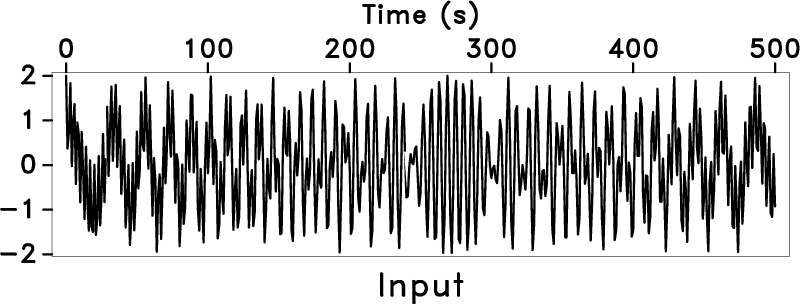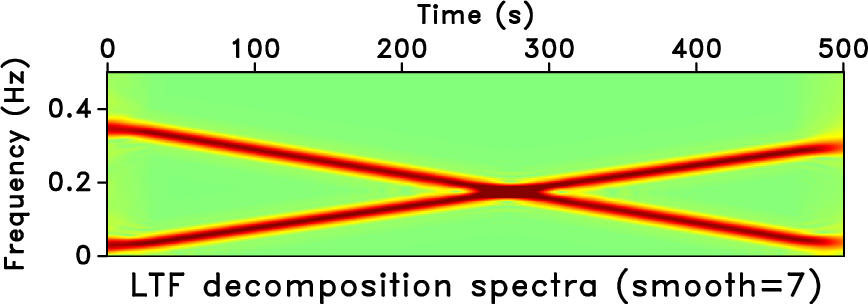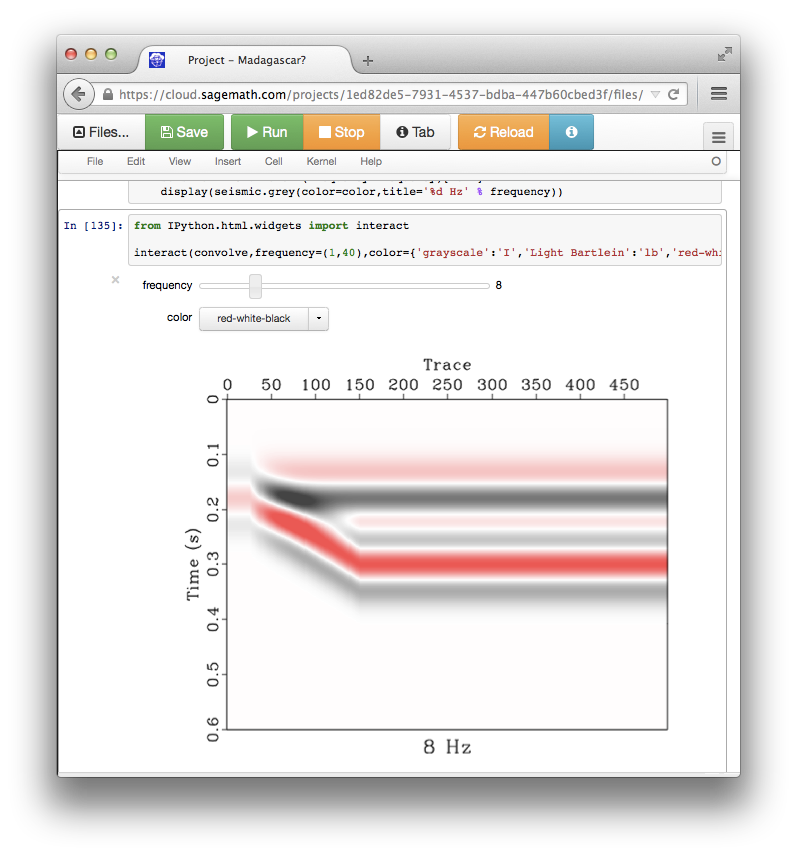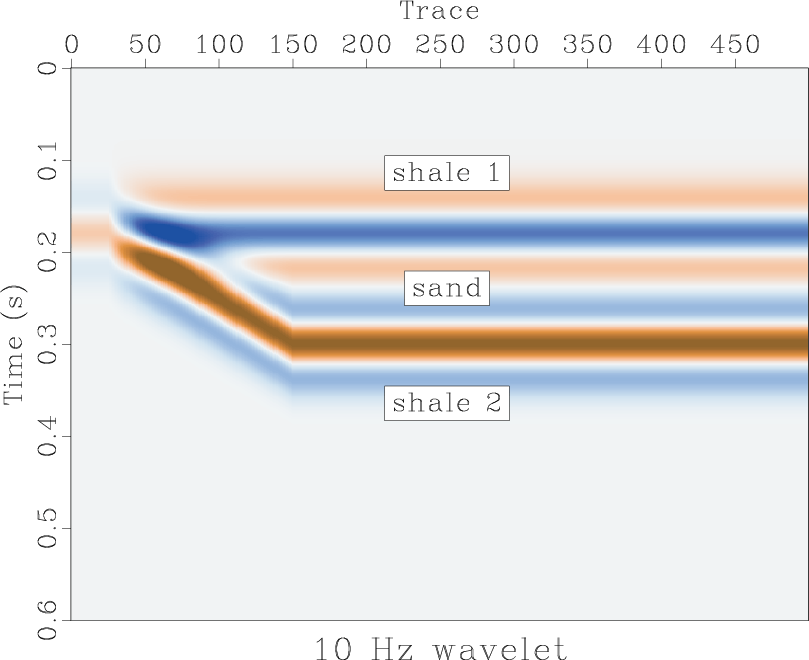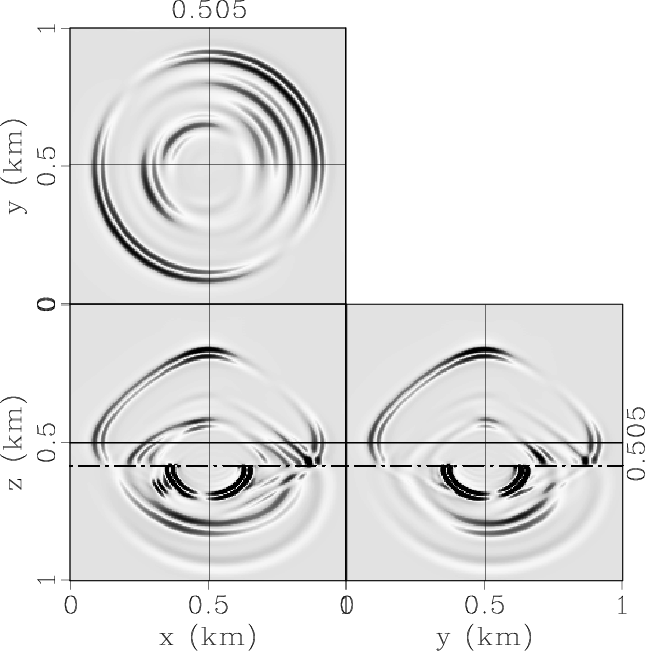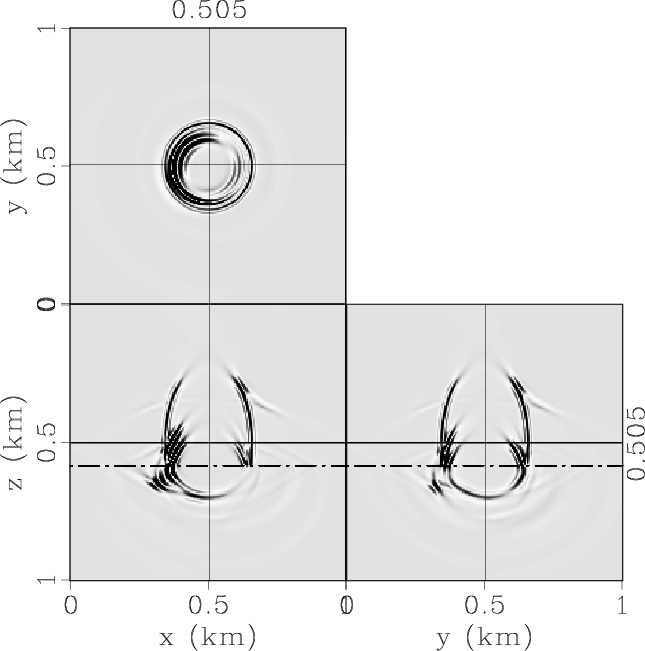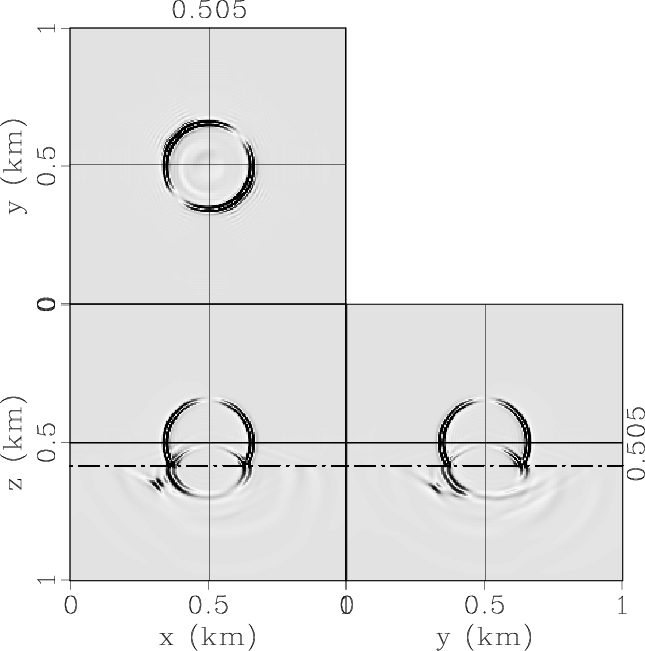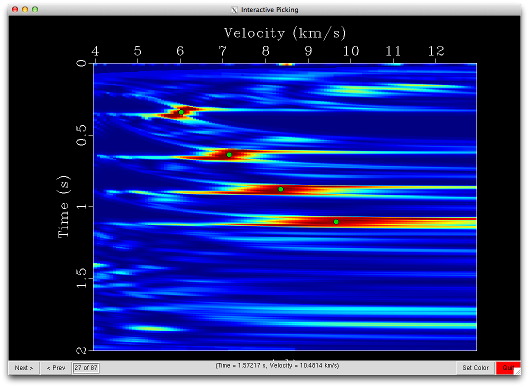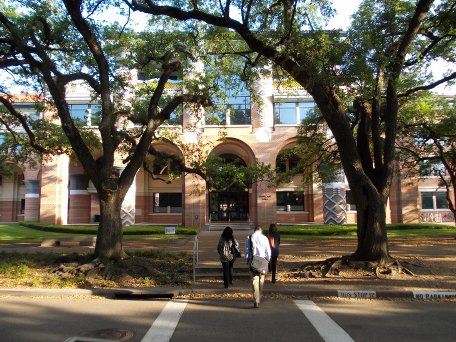sfstolt implements zero-offset (post-stack) seismic migration using Stolt method.
Stolt migration is described in the classic paper
Stolt, R. H., 1978, Migration by Fourier transform: Geophysics, 43, 23-48.
The following example from gallery/french/stolt shows the result of Stolt migration in the French model:

The classic Stolt migration works for constant velocity. However, it can be extended to the case of V(z) by using Stolt stretch and cascaded migrations. See Evaluating the Stolt-stretch parameter and its references, including
Beasley, C., W. Lynn, K. Larner, and H. Nguyen, 1988, Cascaded frequency-wavenumber migration – Removing the restrictions on depth-varying velocity: Geophysics, 53, 881-893.
The following example from sep/stoltst/elfst compares the results of Stolt migration with Stolt stretch, phase-shift migration, and cascaded Stolt migration with Stolt stretch.

sfstolt2 is another version of Stolt migration, with a control on interpolation accuracy. The following example from sep/forwd/stolt compares results from two different interpolations:

